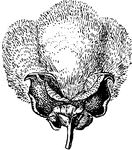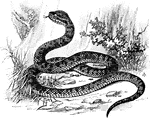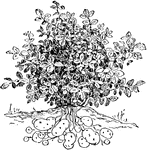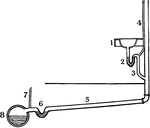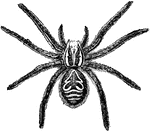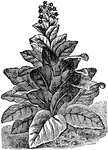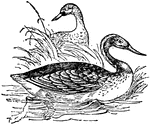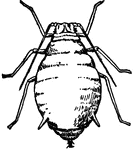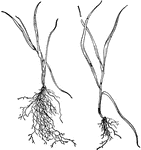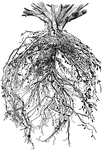
Coyote
A type of wolf. About as large as a pointer dog with a full pelage, bushy tail, upright ears, and sharp…
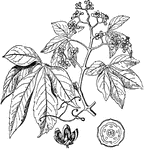
Virginia Creeper
A plant which grows upon or just beneath the surface of the ground, or upon any other surface.

Owl
Owls can be found in all parts of the world, some as short as five inches long while others are as large…

Frustum
If a pyramid be cut by a plan parallel to the base, so as to form two parts, the lower part is called…
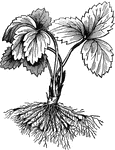
Plant with Roots Pruned
"This pruning or shortening of the roots causes the production of a new set of fibres from the severed…

Gland
"Diagram to show the working parts of a gland. v and a are blood tubes with thin-walled branches around…

Lemming
A rodent quadruped found in the northern parts of America and Eurasia, particularly in Norway and Sweden.…
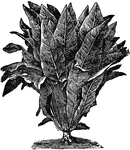
Lettuce
An annual plant cultivated in gardens, and which serves as a salad. There are many species, most of…
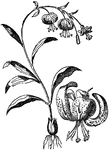
Tiger Lily
An ornamental plant of the genius lilium, characterized by an erect stem from a scaly bulb, numerous…
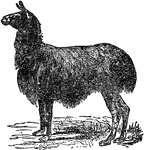
Llama
A ruminating quadruped closely allied to the camel, and native to the southern parts of Peru and other…
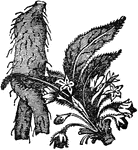
Mandrake
A plant native to America and Eurasia, and which has a narcotic poison in all of its parts.
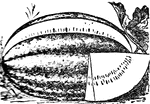
Watermelon
The fruit and plant of the vine-like herb originally from southern Africa. This flowering plant bears…

Microscope
An optical instrument designed to eamine minute objects or parts of objects, and which so magnifies…
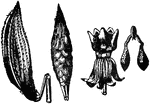
Milkweed
Any plant of the genus asclepias, of the milkweed family, so called from the milky juice that exudes…

Ocelot
A class of carnivorous mammals native to the warmer parts of America, and commonly called tiger-cat.

Tree Design
Sometimes called the tree of life. Always associated with religious belief. It symbolizes Divine power…
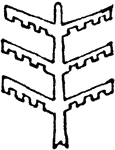
Tree Design
Sometimes called the tree of life. Always associated with religious belief. It symbolizes Divine power…
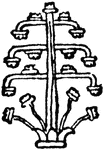
Tree Design
Sometimes called the tree of life. Always associated with religious belief. It symbolizes Divine power…
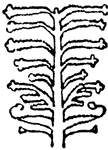
Tree Design
Sometimes called the tree of life. Always associated with religious belief. It symbolizes Divine power…
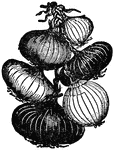
Onion
An edible bulb, produced by a biennial herb of the lily family. The plant has tubulated leaves, a pithy…

Opium
The milky juice obtained fom the unripe capsules of several species of the poppy, which is rendered…
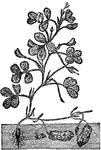
Peanut
A trailing plant of the bean family, bearing a hairy stem, small yellow flowers, and two-paired primate…

Peccary
A genus of animals allied to the swine, and found extensively in South America and the southern parts…

Petunia
A genus of plants of the nightshade family, which are native to the warmer parts of America. The leaves…

Pineapple
A tropical plant much esteemed and cultivated for its fruit. It is so named because the fruit somewhat…
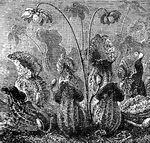
Pitcher Plants
A group of plants remarkable for having leaves or petioles formed like pitchers, and in which more or…

Plantain
A genus of plants distributed abundantly in all parts of the world. They inclue about one hundred species,…
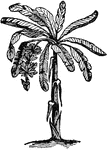
Plantain
A genus of plants distributed abundantly in all parts of the world. They inclue about one hundred species,…
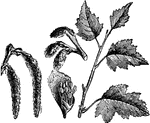
Poplar
A genus of deciduous trees, widely distributed in the north temperate zone, particularly in the temperate…

Poppy
A genus of plants, which are native chiefly to the warmer regions of Eurasia. They occur in many parts…

Pyramid
An architectural structure of solid masonry, built for various purposes in different parts of the world.

Radish
A fleshy plant grown extensively as a garden vegetable. It is thought to be native to India, where it…

Raspberry
A shrubby plant belonging to the same genus as the blackberry. It is cultivated extensively as a garden…
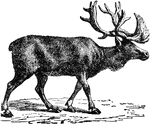
Reindeer
A species of mammals of the deer family, native to the northern regions of Eurasia. It has long been…

Rice
An annual cereal plant native to India, but now extensively naturalized and cultivated for its seed.
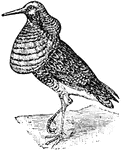
Ruff
A genus of wading birds allied to the sandpiper. They are found widely distributed in the northern parts…
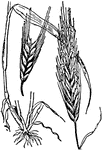
Rye
An import cereal plant. It is native to the Levant but is cultivated extensively in temperate climates,…

Skeleton
The framework of animals, which in vertebrates is composed of bone and cartilage. It serves to support…

Swallow
An extensive genus of birds found in all parts of the world. They are distinguished by a short, depressed…

Tomato
A plant of the nightshade family, which is extensively cultivated for its edible fruit. The tomato is…

Tuberose
An ornamental bulbous plant, native to tropical America and Asia, and cultivated in gardens for its…

Turnips
A biennial plant of the mustard family, which is cultivated for its fleshy globular, edible root.

Violet
A large genus of herbaceous plants, which are found in most parts of the glove, including about 200…
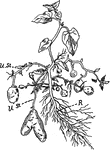
Potato Plant
This illustration shows a potato plant. The tubers are the thickened ends of the under ground stems.
